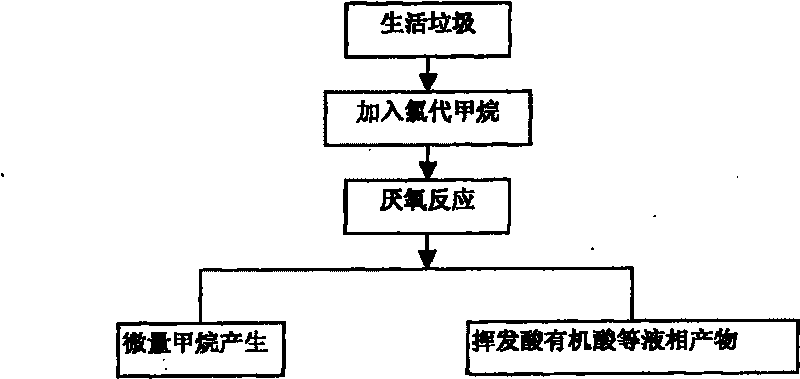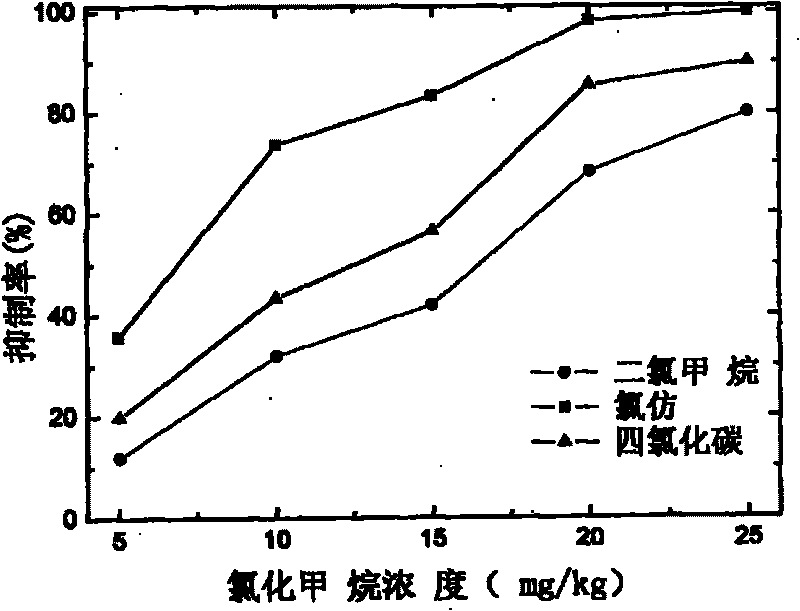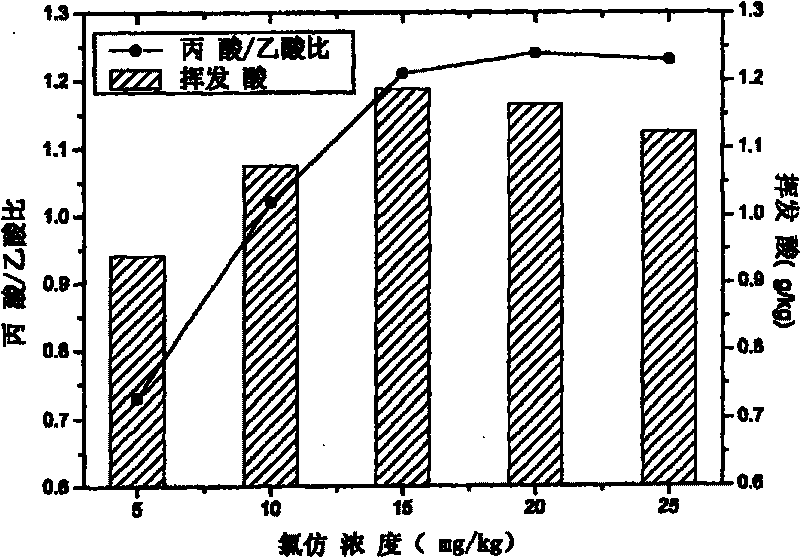Method for using chloromethane to inhibit methane discharging of consumer waste filling field
A domestic garbage and methyl chloride technology, applied in the direction of solid waste removal, etc., can solve the problems of low inhibitory concentration, unfavorable landfill stabilization, unsuitable for the inhibition of methanogens, etc., to achieve efficient inhibition and avoid the greenhouse effect , Inhibitory effect of high-efficiency methanogens
- Summary
- Abstract
- Description
- Claims
- Application Information
AI Technical Summary
Problems solved by technology
Method used
Image
Examples
Embodiment 1
[0018] Please refer to the attached figure 1 , 2 and 3.
[0019] After simply crushing domestic waste with a water content of 50-80%, weigh 50g and put it into a 150mL serum bottle. Then dilute chloroform with water to a solution with a chloroform content of 0.1% by weight. According to the ratio of adding 20 mg of chloromethane per kg of domestic waste, weigh 1 g of chloroform in the serum bottle to simulate domestic waste. In the anaerobic state of the landfill, the gas is collected by the method of depleting saturated saline, and then the content of methane and the composition and content of volatile acids in the gas are determined by gas chromatography. The inhibition rate is obtained by comparing the results, please refer to figure 2 with image 3 . In Example 1, the inhibitory effect of chloroform (scientific name chloroform) at this concentration was mainly investigated. When the content of chloroform is 20mg / kg, methane is completely suppressed, and the suppressi...
Embodiment 2
[0021] Replace chloroform with dichloromethane, then add 5 to 25 mg of dichloromethane per kg of household waste, and the rest are the same as in Example 1. Depend on figure 2 It can be seen that the highest inhibition rate is 80%. Because dichloromethane mainly relies on the level of chlorine element content to achieve inhibition, and there is no specific substrate inhibition of chloroform, the inhibition effect is poorer than that of chloroform.
Embodiment 3
[0023] Replace chloroform with tetrachloromethane (also known as carbon tetrachloride), and then add 5-25 mg of carbon tetrachloride to each kg of household waste, that is, the content of carbon tetrachloride is 5-25 mg / kg, and the rest is the same as the implementation Example 1 is the same. Depend on figure 2 It can be seen that the highest inhibition rate is 90%. Because carbon tetrachloride mainly relies on the level of chlorine element content to achieve inhibition, and there is no specific substrate inhibition of chloroform, it is therefore less effective than chloroform inhibition.
PUM
 Login to View More
Login to View More Abstract
Description
Claims
Application Information
 Login to View More
Login to View More - R&D
- Intellectual Property
- Life Sciences
- Materials
- Tech Scout
- Unparalleled Data Quality
- Higher Quality Content
- 60% Fewer Hallucinations
Browse by: Latest US Patents, China's latest patents, Technical Efficacy Thesaurus, Application Domain, Technology Topic, Popular Technical Reports.
© 2025 PatSnap. All rights reserved.Legal|Privacy policy|Modern Slavery Act Transparency Statement|Sitemap|About US| Contact US: help@patsnap.com



